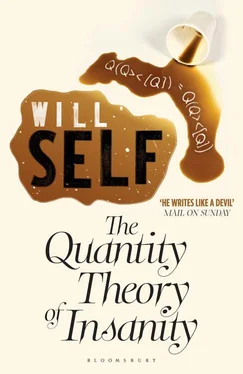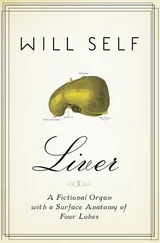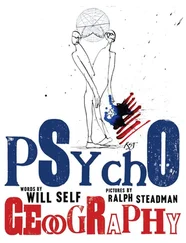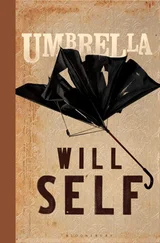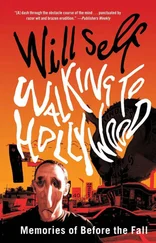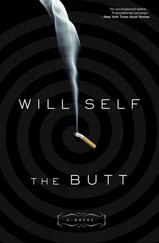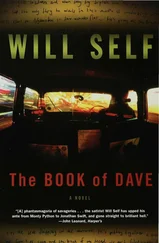Back to Birmingham then and the institute. My teaching, my books, my essentially lonely, but contented scholarly life. But something had changed. There was a new restlessness in the way I attacked ideas and worried at them like a terrier, a new edge to my thinking. All this came to a head as I laboured over completing the index to the revised edition of my doctoral thesis. An American college press of some obscurity had agreed to publish and I knew that the work needed attention. Yet it was no longer a task that quickened my blood. Quite frankly I had long since ceased to care about the nature of academic grant application. The whole study appeared useless and fruitless to me, perhaps only interesting as the purest possible expression of the digging-out and then filling-in mentality of so much academic endeavour — especially in the social sciences. What I wanted to do was to hit upon a general explanatory theory of the relation between normal and abnormal psychopathology. A theory of the order of Freud’s entire corpus of work, but, unlike Freudianism, intimately bound up with and connected to a theory of social form and change.
As I laboured on the tedious index I felt something gestate inside of me. It was like a great, warm, rounded bolus of thought. Stuck to its sides were all the insights and experiences I had had in the preceding ten years: my undergraduate days with Müller at Oxford; my postgraduate thesis at Chelmsford; my time researching for MacLintock; my doctorate at Birmingham; my trials with Busner. All of these were now to find their rightful place, unified in the Quantity Theory of Insanity.
Drizzle over Bromsgrove. The sodden postman flobs along the pavement, pauses as if to enter by the green garden gate, and then flobs on. The damp clinging of cloth to flesh is felt across a sodden twenty-foot tangle of bindweed as he moves on past the mullions. My desk — normally a sanctuary of rigid order, a baffle against the worst of entropy — has started to decay. Curled and stained pages of typescript hold funnelled within themselves soggy drifts of biscuit crumbs. Biros, cemented to one another and to balls of fluff and lint with hardened saliva, are thrown into the path of the paper avalanche like so many spillikins. Hither and thither across the melamine stand ramparts of bound volumes from the institute library, Dewey decimal tags detaching from their spines and curling into Sellotape snails. I no longer have the impetus, the application, to work on the index, instead I doodle on a sheet of scrap paper, my pen describing senseless diagrams which express with a conjunction of lines and dashes the relations that obtain between a series of dots …
… And yet this particular diagram has such an appealing, cogent form. It looks as if it ought to express a genuine relationship of some kind. It is too four-square, too obviously functional, to be a mere doodle. I see in it the shape of the schematic diagram I drew to express the double-double-blind status of the Concept House trial … And then I see it, altogether, in one pure thought-bite; the Quantity Theory of Insanity shows its face to me.
I suppose all people who look for the first time upon some new, large-scale, explanatory theory must feel as I did at that moment. With one surge of tremendous arrogance, of aching hubris, I felt as if I were looking at the very form of whatever purpose, whatever explanation, there really is inherent in the very stuff of this earth, this life.
‘What if…’ I thought to myself, ‘What if there is only a fixed proportion of sanity available in any given society at any given time?’ No previous theory of abnormal psychology had ever assumed such a societal dimension. For years I had sought some hypothesis to cement the individual psyche to the group; it was right in front of me all the time. But I went on, I elaborated, I filled out the theory, or rather, it filled out itself. It fizzed and took on form the way a paper flower expands in water. ‘What if,’ I further thought, ‘any attempts to palliate manifestations of insanity in one sector of society can only result in their upsurge in some other area of society?’
So that was it! The surface of the collective psyche was like the worn, stripy ticking of an old mattress. If you punched into its coiled hide at any point, another part would spring up — there was no action without reaction, no laughter without tears, no normality without its pissing accompanist.
The sodden crescent at the edge of my long-since-dunked digestive biscuit flotched to the desk top like excrement. I paid it no mind. In that instant I saw whole series of overlapping models of given sanity quantities — for if each societal grouping had a given sanity quotient, then why not each sub-societal grouping? From the Bangladeshis to the bowling club, from the Jews to the Jewellers’ Association. It must be so. In each model the amount of sanity available would be different and each societal model would have a bearing on the next. I saw it in my mind’s eye as an endless plain of overlapping mattresses, each of a different size. Tread on one and the effect would ripple away through all the others.
That was it stated in its barest outline, but what was especially remarkable about the Quantity Theory was that it came into my mind complete with a myriad of hypotheses. Such as:
i) If you decrease the number of social class 2 anorexics you necessarily increase the numbers of valium abusers in social class 4.
ii) If you provide efficient medication for manic depressives in the Fens, there are perceptible variations in the numbers of agoraphobics on the South Coast.
iii) If you use behavioural conditioning to stop six pupils at St Botolph’s primary school on Anglesey from bed wetting, the result will be increased outbursts of sociopathic rage among the ten borderline psychotics that attend the school.
And so on.
In one fell swoop I also found myself abandoning all the models of sanity and insanity I had absorbed during my years of study. The key to the abnormal psyche lay not in a juxtaposition between the acquired and the instinctual, nor in a comprehensive model of the workings of the mind, but in an altogether purer, more mathematical direction. Traditional psychology retained the status of being a pseudo-science, its findings unable to bridge the vast gulf between the empirically testable hypotheses of neurophysiology and the incommunicable truths of inner mental states. Just as philosophy, try as it might, cannot bind itself to formal logic. All this would end with Quantity Theory. The individual psyche would be left to discover its own destiny; psychology would be confined to the elaboration of statistical truths.
I make no bones about it, the Quantity Theory was my salvation. No one ever complains if a great artist says that he was driven to create a masterpiece by a hunger for recognition and money. But a scientist? Well, he is meant to be disinterested, pure; his ambition merely to descry the cement of the universe. He isn’t meant to use it to start laying his own patio. I was saved from Bromsgrove, from Aston, from Chelmsford, from the Majestic Hotel, by the Quantity Theory. From its inception I knew that it fulfilled the criteria required by all great scientific theories: 1. It made large-scale predictions. 2. These were testable empirically. 3. The testings would really eat up cash.
That night I paced the Wilton until it smelt of singed nylon. I could not sleep, I was tormented, gripped by the fear that should I make the wrong move, should I fail to do the Quantity Theory justice, then I would be unable to claim all the credit. I knew that as a responsible scholar I should search around for some funding, do some fieldwork and then write up the results for publication in the relevant journal. But a wayward, craven part of me feared instantly that some other, some interloper was perhaps at that very moment stumbling on the same truth and about to make it known to the world — pulverising the credit due to me and me alone. I was tempted to call the national press, arrange a conference of some sort, upstage the academic community and tell the world.
Читать дальше
